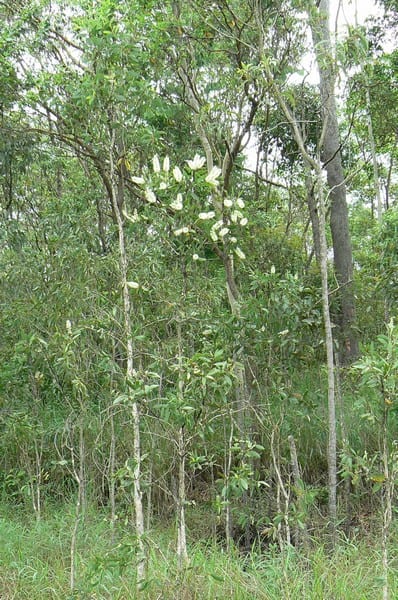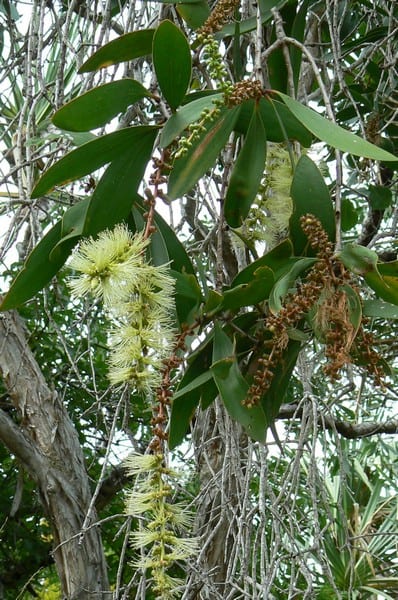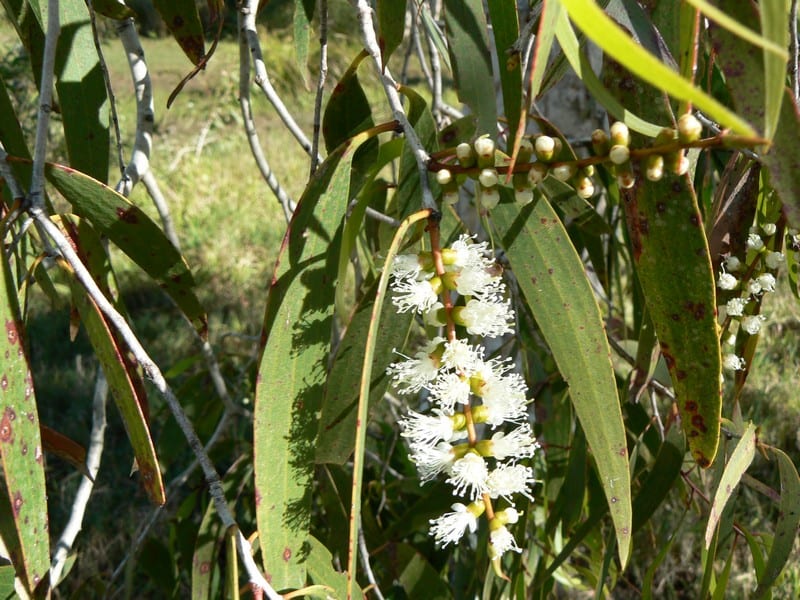Broad-leaved tea-tree
Melaleuca viridiflora, Fam. Myrtaceae








Small tree to usually to 7m tall but may be twice that height. It has a straight slender trunk with paperbark which often has a brownish tinge on the outer layers.
| Weed Category: | |
| Weed: | No |
| Form or habit: | Small tree, Med tree |
| Family: | Myrtaceae |
| Leaf: | Simple Alternate Narrowly to broadly elliptic, 6-22 x 2-6cm, thick, dull green with longitudinal veins. New growth covered in straight silky hairs giving it a silver to pinkish silver sheen. |
| Flower conspicuous: | Conspicuous |
| Flower colour: |
White, Red, Green |
| Flower description: | Usually greenish white in dense bottlebrush spike 4 to 15cm long. May flower for most of the year but most during March to August. Some individuals have red flowers. |
| Fruit conspicuous: | Inconspicuous |
| Fruit colour: |
Grey |
| Fruit: | Dry |
| Fruit description: | Dry, grey, woody capsules, 2 to 4mm long. Many clustered together after flowers are gone. |
| Habitat: | Open forest, wetland, woodland. |
| Distribution | It is found on sandy or gravel surface soils in coastal lowland areas, marshes and estuarine plains and other areas where groundwater is close to the surface or surface water sits for some months of the year. |
| Food source for: | The nectar is eaten by many species of bird and flowers are eaten by the black flying-fox. |
| Toxicity: | No toxicity known |
| Origin: | Northern Australia; PNG |
| Notes: | Many parts of the tree used extensively by Aboriginal people for a variety of uses from medicinal to functional- flowers soaked in water to make a sweet drink, leaves crushed and vapours inhaled for colds, bark for bedding, food storage and cooking, shelters, ceremonial "dress-barks", burial cylinders and canoes. |
| Information sources: | Melzer R. & Plumb J. (2007) Plants of Capricornia. |